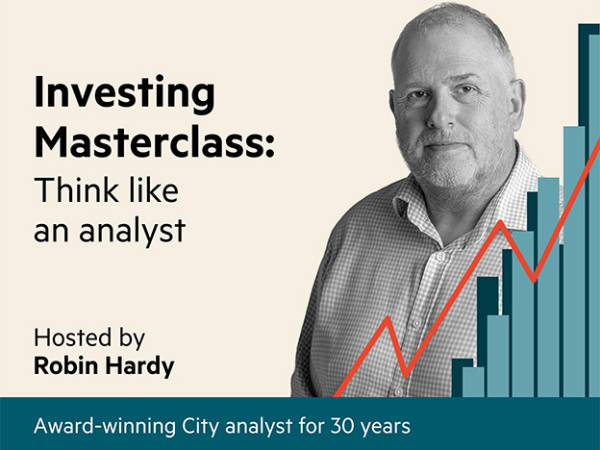- Investors are becoming "believers" once again.
- Why are we so gullible?
“Are you a believer?” he asks.
Registering the confusion on my face he repeats the question with more emphasis.
“Are you a believer?”
My response is an unconvincing, “…yes?”
This exchange wasn’t a doorstep encounter with a Jehovah's Witness. Rather it happened around the peak of the dot.com boom. As a rookie journalist I’d gone to interview the star manager of one of Aberdeen Asset Management’s high-flying but ill-fated tech funds. The “believer” question was the fund manager’s opener accompanied by a firm handshake.
Green as I was, it felt disconcerting to have investment presented in terms of “belief”; the implication being one of an unassailable truth. However, had my interviewee made the same enquiry at the end of our conversation, I’m sure he would have received a response that was unequivocally affirmative. He told a great story.
Blinded by belief
Belief is a dangerous and intoxicating thing for investors, something the fund manager experienced in the months following our meeting. In the long term, successful investing is not about believing anything very much. It is about soberly weighing up probabilities based on the facts available and allocating capital accordingly. This is the only reliable way to navigate the myriad of unpredictable risks and opportunities the future holds.
Belief tends to cause investors to make the kind of grossly oversized bets on low-probability outcomes that create irrecoverable losses. Losses that take a portfolio to, or near to, zero.
Once again, belief is starting to take centre stage in many corners of the market. It is the foundation of many investments that have become popular during the pandemic. The blank-cheque special acquisitions companies (Spacs) require belief in the deal-doing “talent”of the vehicles’ sponsors. The meme stocks require belief that chat-room users can profit by acting en masse. Meanwhile, crypto-currency is an asset class that seems to fundamentally be built on a shared belief that it actually has value. Dogecoin even takes the meme-stock craze into the crypto world!
All these investment stories boast some “truthiness” (a phrase coined by US comedian Stephen Colbert to describe statements that sound true on gut-feel but are not fact based). They are long-shots nevertheless, and deserve an appropriate weighting in portfolios.
But when it comes to finding the right balance, investors face the problem that good stories are incredibly compelling, even when they’re not particularly substantive. Spacs, meme-stocks and crypto all have great stories and promise great riches.
What’s more, a well-researched behavioural trait known as “long-shot bias” provides significant evidence that we all love high-payoff but low-probability lottery-style bets. Psychologically, we are gagging for an excuse to over allocate to them. Stress also shortens our time horizons, meaning the appeal of get-rich-quick promises is likely to have grown as the world wrestles with Covid-19.
Why are investors so prone to believe shaky narratives, and in what circumstances are we most gullible?
Once upon a time...
In the bestselling book Black Swan, writer and trader Nassim Taleb introduced the idea of the “narrative fallacy”. This is the idea that our love of a good story fools us into seeing intention and cause in random events. We’re biased to see good outcomes as being the result of talent and genius by protagonists, while underestimating the role of luck and the mundane. Likewise, bad outcomes are attributed to incompetence, malpractice and evil-doers.
This warps our ability to evaluate situations, especially when a story supports our existing beliefs. As Taleb writes: “Metaphors and stories are far more potent (alas) than ideas; they are also easier to remember and more fun to read.”
Our willingness to buy into stories has some very positive aspects, too. Psychologist Rob Brotherton succinctly explains the quid pro quo of our propensity to believe in his best selling book Suspicious Minds, Why We Believe In Conspiracy Theories: “Learning about reality is an exercise in finding patterns in data, and sorting the real from the random. A brain biased towards seeing meaning rather than randomness is one of our greatest assets. The price we pay is occasionally connecting dots that don’t really belong together.”
Part of the difficulty we have in separating substantive ideas from a great yarn is that when we analyse historical events, cause and effect seem deceptively clear, something psychologists refer to as “hindsight bias”. With hindsight, we can create stories that match a known outcome. We work backwards to create a coherent narrative from what preceded. We ascribe cause to the events that appear most striking. And where we see cause, we search for intent from protagonists in preference to ascribing events to chance.
This process means the past appears much less random and more certain than was actually the case at the time. For our brains, what feels true of the past feels like it should also be true of the future. So successfully corralling disparate current events to make a prediction of what’s going to happen is extremely satisfying. It is the basis of good stories. However, it’s not necessarily the basis of good analysis.
As Nobel prize-winning behavioural economist Daniel Kahneman puts it in his classic book Thinking, Fast and Slow: “Good stories provide a simple and coherent account of people’s actions and intentions. You are always ready to interpret behaviour as a manifestation of general propensities and personality traits – causes you can readily match to effects… A compelling narrative fosters an illusion of inevitability.”
Intent is a very important ingredient in any good story. That’s especially true when it comes to the “evil” intentions of an individual or institution with a supernormal ability to execute a sinister scheme. For real narrative wallop, the baddie needs to be pitted against a heroic underdog whose side we can take; in reality, underdogs by definition usually lose so can be very costly allies for investors.
Many of today’s most popular long-shots have the kind of goodie vs baddie vibe that we love in stories. The Wallstreetbets forum behind the popularity of many meme stocks represents the “little guy” taking on “the man”; often in the guise of the “evil short seller” hedge fund. What’s not to love – aside from the fact that the dynamics of the trades resemble a classic pump-and-dump.
Spacs, meanwhile, claim to level up the playing field with Wall Street elites for small-time investors by providing access to the “talent” of mega-star deal makers. What’s not to love – aside from the fact the “talent” usually takes millions of dollars in fees plus 20 per cent of the company once the deal closes.
And crypto goes right to the top, socking it to governments and central banks everywhere. Adding to the allure, there’s even the mysterious inventor of the asset class, Satoshi, who fell off the grid a decade ago. What’s not to like – aside from the fact the anti-statist and nefarious nature of crypto screams for a clamp down by authorities, alongside the technology’s Orwellian appeal to authoritarian governments.
Down the rabbit hole
The world of conspiracy theories illustrates the extent to which we are willing to believe in unlikely stories.
An important thing about the psychology of conspiracy theories is that it is not distinct from the way we all generally perceive the world. True, it does take some of our common behaviours to their extremes. But most people believe some narratives that exist in the realm of conspiracy theory, although almost by definition, few of us are willing to admit to this or are even capable of identifying it in ourselves.
“I think there's a huge connection between what we see in beliefs in [long-shot] assets and the sort of things that we see in conspiracy theories,” says Greg Davies, head of behavioural science at Oxford Risk.
How powerful the sway of a story is for those who want to believe it can be illustrated by one of the darkest, deadliest and most categorically-disproved conspiracy theories of the modern age: The Protocols of the Elders of Zion.
The reason why there is little doubt the Protocols conspiracy theory is a work of fiction is that it can itself be traced back to two works of fiction that it was directly plagiarised from. The Protocols, which began circulating at the start of the 1900s, purported to be a transcript of senior Jewish leaders plotting to take over the world; something that already seems suspiciously like a dream-come-true for antisemites.
However, in 1921 The Times newspaper unearthed an obscure book from the 1860s which the fraudsters who wrote the Protocols had copied large tracts from. The book itself was intended as an attack on Napoleon III. An antisemitic German novel, also from the 1860s, was found to be another heavily plagiarised source. As the forgery was being uncovered, corroborating evidence emerged that linked its production and dissemination to the Russian secret service.
One might think such categorical evidence would sink a conspiracy theory. However, at the same time as any claim to the legitimacy of the Protocols crumbled, the conspiracy theory was adopted by Adolf Hitler as part of a hate-drenched ideology that led to the murder of an estimated 5 to 6 million Jews.
What’s more, despite being one of the world’s most famous literary hoaxes, the Protocols still haunt society. As recently as last year, a member of the advisory board of President Trump’s re-election campaign was suddenly pulled as a scheduled speaker at the Republican National Convention after she retweeted a thread encouraging people to read the Protocols.
The history of the Protocols tells us two things. The first is that compelling stories, for those who want to believe them, trump even the most obvious facts against them. Cass Sunstein, legal scholar and co-author of behavioural finance classic Nudge, and Adrian Vermeule in their 2008 “Conspiracy Theory” essay point out: “Direct attempts to dispel [a conspiracy] theory can usually be folded into the theory itself, as just one more play by powerful machinators to cover their tracks.”
The second lesson from the Protocols is that it tells us that in real life the truth is hard to hide. The conspiracy to create and disseminate the forgery was real. It may have been successful, but it was found out. Even with such a relatively small-scale plot – forging a document and getting it into sympathetic hands – loose ends and the inability to keep secrets meant it was exposed.
For investors, it is important to rationally assess the implications when there is a lack of firm evidence to support an attractive argument. For example, don’t expect a firm to make a technological breakthrough if it doesn’t have a research and development (R&D) budget that matches its ambition. It’s also vital to give time to evidence that goes against an existing position.
Pied Piper
We don’t create and consume stories in isolation. We’re all storytellers. We spend our time telling others’ stories and being told stories. How convincingly stories are told, and in what circumstances, has a significant impact on how likely they are to influence beliefs.
The “believer” fund manager that made such a strong impression on me during the white-heat of the dot.com boom was an example of a great storyteller. Intelligent, informed, convincing and himself convinced. A common misconception about people who fall into believing in long-shots, fake news and conspiracy theories is that they have feeble intellect. In fact, the opposite is often true. It takes intelligence to construct a good story and get evidence to fit a brief.
Famously, Sir Isaac Newton, a supremely rational and financially literate individual, was sucked deep into South Sea bubble stocks and lost his shirt. In a similar vein, one of the world’s most successful investors, Robert Mercer, who built his multi-billion dollar fortune applying the scientific method to investing at Renaissance Capital, is said to have stunned colleagues with his ability to believe in conspiracies.
Sunstein sees the influence of convincing and well-informed individuals as creating what he refers to as “reputational cascades”. When one well-regarded individual starts promoting a bogus belief, other well-regarded people become more likely to buy into it, which adds to its credence. This creates a snowball effect that builds authority behind a flawed idea. What’s more, those who disagree will not want to speak out for fear of looking stupid or being ejected from a group.
The potential for social media to create echo chambers and filter bubbles in which questionable ideas and fake news flourishes is another potential danger for investors.
The importance of the events we are trying to understand also has an influence on our desire to hear a believable and high-impact explanation. Generally, human psychology demands that a big event has a big cause – and often a sensational one. So when psychologists at Queen’s University Canada asked people about an airline accident, they found participants far more likely to attribute an explosion in the cargo hold to terrorism when they were told the incident had resulted in many deaths.
It follows that when we see the price of investments rise in a way that could create life-changing riches for holders (or HODLers), we want a big explanation. It’s not enough that a few people got lucky. It needs to be either the next-big-thing or the fraud of the century.
People are particularly prone to identify dubious causes for events when information is scarce. One famous psychological phenomenon describing how this can produce folly is known as the Dunning-Kruger effect. This is when people massively overestimate their understanding of a subject at the early stage of accumulating knowledge about it. It’s actually a lot easier to create a coherent story when there are fewer facts to wrestle with.
Investors often find themselves in a position where information is limited. This is the case with emerging technologies, such as blockchain, as well as emerging ideas, such as modern monetary theory (MMT). No one knows what these things will ultimately mean, but at the same time they seem to be a big deal so we want big explanations to believe in.
Another important information constraint investors face today is the incredibly poor job that company accounts do in explaining the financial performance of many of the world’s most exciting companies. Around the turn of the millennium, companies started to invest more in intangibles (eg, brand and technology) than tangible assets (eg, property and machinery). The gap has continued to widen ever since.
The problem this creates for users of company accounts is that whereas the costs associated with tangible investments are spread out to match the multi-year benefits they generate, accounting standards dictate that most costs associated with intangibles are taken upfront. This has led to the systematic and significant understatement of the profits of some of the fastest growing and most innovative companies in the world. This creates huge confusion for investors trying to apply principles of valuation.
As accounting professor and intangibles aficionado Baruch Lev wrote in his 2018 article Ending the Intangible Accounting Status Quo: “That’s the reason for the absurd phenomenon… that 50 to 70 per cent of US public companies report losses in a booming economy.”
In this kind of environment, where important ideas are emerging and financial information has lost usefulness for a large swathe of companies, investment beliefs based on narrative flourish.
The truth isn't out there
“The very high level answer to why people believe is because people get comfort from believing in things. It gives a sign of hope, a sense of belonging, a sense that it's all gonna work out, that we’re part of a tribe,” says Davies. “The need for emotional comfort is one of the things that drives people towards adherence to beliefs.”
Investing is not a comfortable activity. Investors have to be realists to be successful over the long term. The market could not care less what our personal beliefs are. And nothing is ever certain about the future, even if hindsight bias makes it feel like it should be.
That leaves investors faced with one hugely uncomfortable truth: there is no truth when it comes to investing. Weighing investments based on probabilities is all we can do. Falling in love with investment stories is a road to ruin even if luck can sometimes mean bad bets pay off big time in the short term. But in the long term, investment strategies that go too far in on belief come undone.











